Skype: neodalle-travel
Tel: +86 135 7447 2266
E-mail: sales@visitaroundchina.com
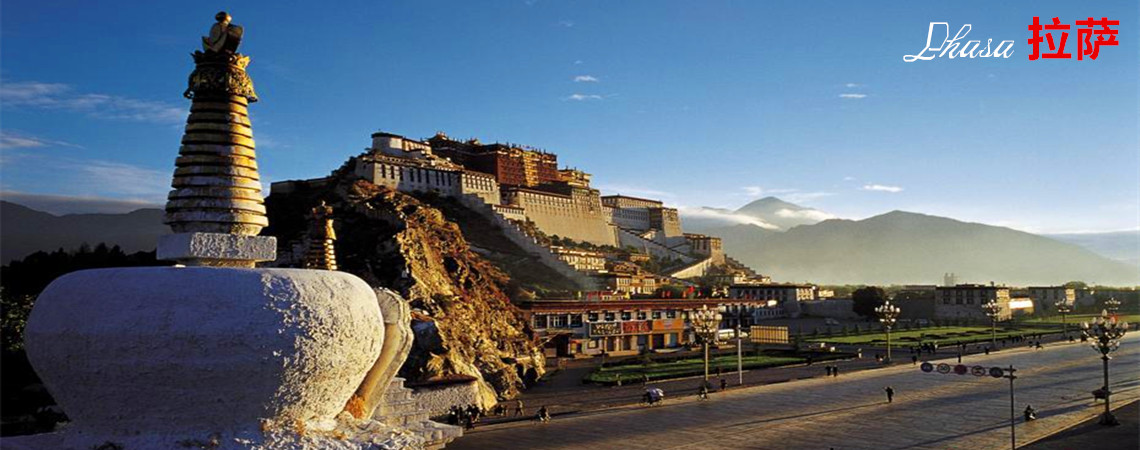
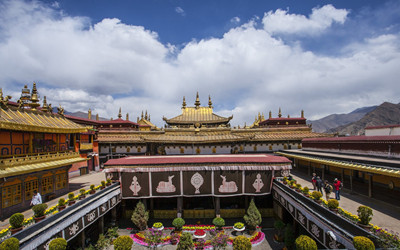 The Jokhang Temple complex has several decorated shrines and rooms. The main hall of the temple houses the Jowo Shakyamuni Buddha statue, perhaps the single most venerated object in Tibetan Buddhism. There are also famous statues of Chenresig, Padmasambhava and King Songtsan Gambo and his two famous foreign brides, Princess Wen Cheng (niece of Emperor Taizong of Tang Dynasty) and Princess Bhrikuti of Nepal.
The Jokhang Temple complex has several decorated shrines and rooms. The main hall of the temple houses the Jowo Shakyamuni Buddha statue, perhaps the single most venerated object in Tibetan Buddhism. There are also famous statues of Chenresig, Padmasambhava and King Songtsan Gambo and his two famous foreign brides, Princess Wen Cheng (niece of Emperor Taizong of Tang Dynasty) and Princess Bhrikuti of Nepal.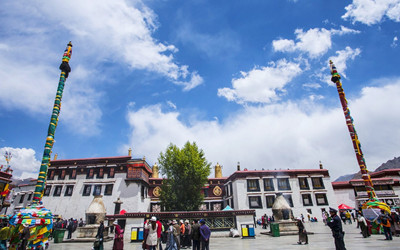 Jokhang Temple has remained a key center of Buddhist pilgrimage for centuries. It was sacked several times by the Mongols, but the building survived. In the past several centuries the temple complex was expanded and now covers an area of about 25,000 sq. meters. There is a walled enclosure in front of the Jokhang which contains some willows called the Jowo Utra ('Hair of the Jowo') and a doring or inscribed pillar erected by the Chinese in 1793 during a smallpox epidemic. It records the Sino-Tibetan treaty of 822 concluded by King Ralpacan and includes 'China and Tibet's vow of eternal peace and mutual respect of the borders of their independent states' as well as advice on hygiene measures to prevent smallpox.
Jokhang Temple has remained a key center of Buddhist pilgrimage for centuries. It was sacked several times by the Mongols, but the building survived. In the past several centuries the temple complex was expanded and now covers an area of about 25,000 sq. meters. There is a walled enclosure in front of the Jokhang which contains some willows called the Jowo Utra ('Hair of the Jowo') and a doring or inscribed pillar erected by the Chinese in 1793 during a smallpox epidemic. It records the Sino-Tibetan treaty of 822 concluded by King Ralpacan and includes 'China and Tibet's vow of eternal peace and mutual respect of the borders of their independent states' as well as advice on hygiene measures to prevent smallpox.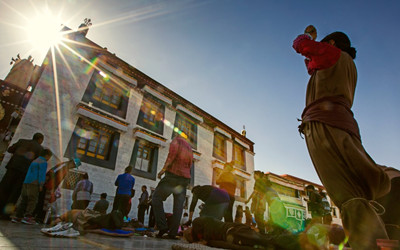 Legend 1: It is said that Jokhang Temple site was originally a lake, Sontzen Gampo promised to Princess Bhrikuti in the lake that he would built a temple in the place where the ring fell, unexpectedly the ring fell into the lake and at once the lake was spread light network, light network showed a grade nine white pagoda. Hence, a project started with thousands of white goats carried soil to build the temple.
Legend 1: It is said that Jokhang Temple site was originally a lake, Sontzen Gampo promised to Princess Bhrikuti in the lake that he would built a temple in the place where the ring fell, unexpectedly the ring fell into the lake and at once the lake was spread light network, light network showed a grade nine white pagoda. Hence, a project started with thousands of white goats carried soil to build the temple.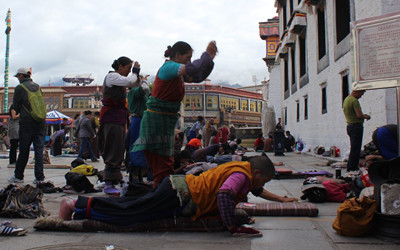 areas, suppressed the limbs and joints of raksasi, and to build the 13 monasteries.
areas, suppressed the limbs and joints of raksasi, and to build the 13 monasteries.What to see ?
Jokhang Temple has 4 floors, and the whole building is in classic Han nationality style of goldentop, corbel bracket. Watchtower, carved roof beam is in Tibetan style, under the second and third floor’s eaves of main hall there was lined 103 wooden carving beasts and sphinx, and inside the temple there is nearly thousands kilometers long Tibetan fresco "princess Wencheng come to Tibet " and "the Jokhang Temple Construction ".
The Maitreya Hall
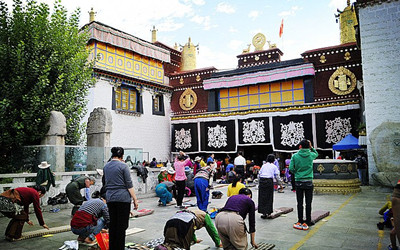 The main figure of this Buddha hall is a small and delicate Maitreya Buddha, every year during the Monlam this figure of Buddha will need to be carried to have ritual parade along Barkhor Street. A Bodhisattva Manjusri and Avalokitesvara placed on both side of this statue of Buddha, and beside these two bodhisattvas’ figures is a statue of Tara figure in lotus position respectively. In addition, the four guardian deities close to the wall with anger form are to protect the Buddha hall. On the right side of door is vaisravana (one of the heavenly kings in Buddhism), the left is the god of wealth Gabarra. Upon altar is a figure of lama Jiewabumu, he had built the weir dam in Lhasa to prevent from attack by flooding. When enter the door if you look at the lower left corner of the temple, you will see a small rocky mountain goat. This is the legendary holy goat that carried soil to fill Wotang Lake.
The main figure of this Buddha hall is a small and delicate Maitreya Buddha, every year during the Monlam this figure of Buddha will need to be carried to have ritual parade along Barkhor Street. A Bodhisattva Manjusri and Avalokitesvara placed on both side of this statue of Buddha, and beside these two bodhisattvas’ figures is a statue of Tara figure in lotus position respectively. In addition, the four guardian deities close to the wall with anger form are to protect the Buddha hall. On the right side of door is vaisravana (one of the heavenly kings in Buddhism), the left is the god of wealth Gabarra. Upon altar is a figure of lama Jiewabumu, he had built the weir dam in Lhasa to prevent from attack by flooding. When enter the door if you look at the lower left corner of the temple, you will see a small rocky mountain goat. This is the legendary holy goat that carried soil to fill Wotang Lake.
Tara Hall
Tara Hall consecrated Tara. In the middle of the hall is Tara figure and behind the figure in the glass-frame cabinet is main embodiment of "twenty one Tara figure”. On the right of Niche there are six statues of Buddha, the former three are known as "three division kings" of a group of figure of Buddha, that is Shantarakshita Khenpo, padmasambhava and prince of Dharma Trisong Deutsen. The other three are “three figures of teacher and pupils ", namely the master Tsongkhapa and his two disciples, master Kezhujie and Jiacaojie.
Monument Commemorating Tang Dynasty's Aligning with Tibet
Into the small square in front of the Jokhang Temple, you can see the outline of the Jokhang Temple. The first thing that comes to people’s sight is two pieces of stone tablets surrounded by the circle of walls. A piece of the south is the famous Monument Commemorating Tang Dynasty's Aligning with Tibet, 3.42 meters high, 0.82 meter wide, 0.35 meter thick, established in Tang dynasty Changqing period third year (AD 823) and carved in both Mandarin and Tibetan.
The 9th century, Tang government and Tibet achieved reconciliation in an attempt to “not be each other’s enemy anymore”, "don't involve in war", "making people living in country at peace”. Then btsan-po (Tibetan ruler) Ralpacan in order to show the sincerity of friendship between two countries, he set up the monument in front of the Jokhang Temple, the inscriptions wrote earnestly, and it has weathered now, but most of the inscriptions is still legible. Beside the tablet is a willow tree, reportedly grew by princess Wencheng, called as the princess willow by local people.
Jokhang Temple Goldentop
Underlying the ticket office, there is stair can directly lead to the second and third floors of the platform. On the platform overlooking, people can see Potala Palace is glorious under the bright light of the sun. From here, people can also overlook the stream of people walk in the Jokhang Temple square, and can view the vitality of Tibetan in Barkhor Street. There is tea bar in summer, you can rest here.
Avalokitesvara Hall
The main Buddha figure is small Avalokitesvara figure riding on a lion (first figure from the left) instead of the great Amitabha Buddha, and the rest of the five Buddha figures are different embodiment of Avalokitesvara.
Grandparent and Grandchildren Three Princes of Dharma Hall
The main Buddha figure in this hall is Tibetan king Sontzen Gampo, Tibetan king Trisong Detsenon is on the left and Tibetan king Ralpacan is on the right. The three Tibetan kings ruling period was Tubo (Tibet regime in ancient China) heyday, under their strong support so that Buddhism could introduce into Tibet regime in ancient China, and was developed and prosperous. They were three princes of Dharma in the history of Tibet, traditionally they were called "Grandparent and Grandchildren Three Princes of Dharma".
Travel Tips:
Add: Barkhor Street, Chengguan District, Lhasa, Tibet Autonomous Region, China
Transport: Jokhang Temple is in the Lhasa center, visitors can walk there; if people who takes midibus to there and get off at the Tibetan Hospital, and then take tricycle or taxi to Jokhang Temple Square.
Opening Hours: 07:00-17:30
Entrance fee: CNY 80
 Ask Questions ?
Ask Questions ?